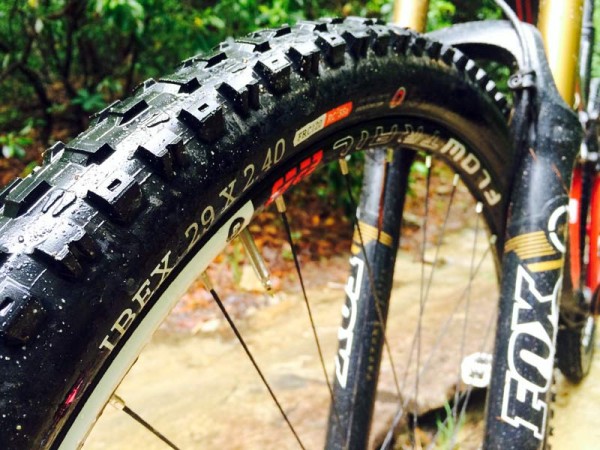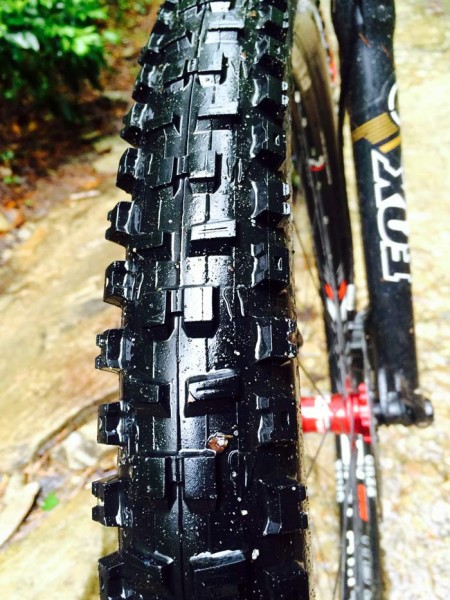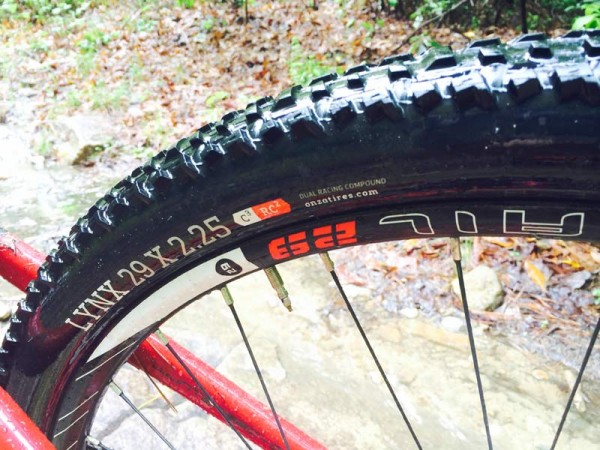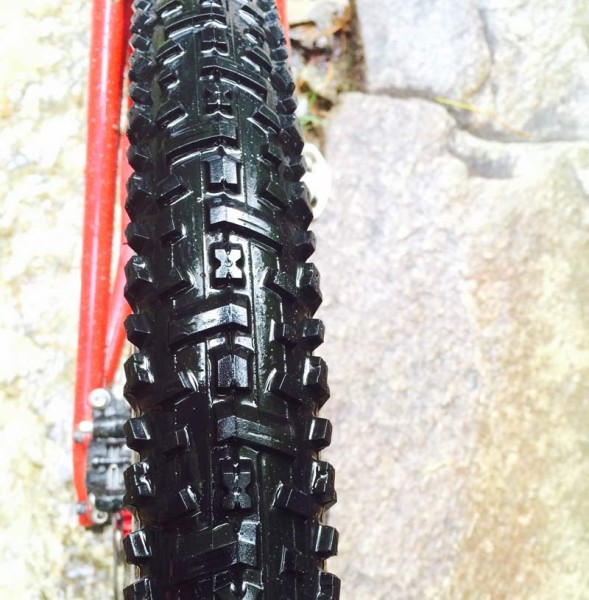Technically, this is a three-ride review, which took place across two days in the mountains of Asheville and Dupont State Forest in North Carolina. Jake Scott, who runs Bike Fettish and imports Onza tires for the U.S., set up the demo bikes at Cane Creek’s DB Inline launch with tires.
Onza’s been around for a while. Many of us fondly remember some of their original designs. Now, they’re making a bigger push stateside with new treads introduced at Sea Otter. My bike was set up with the Ibex 29×2.4 on the front and Lynx 29×2.25 on the rear mounted to Novatec Flow Trail wheels (20mm inside width), a combo well suited to the varied terrain we rode. Trails and conditions ranged from the standard east coast mountain soil, roots and rocks on day one and slick rock granite domes on day two. First day was dry (except for our usual heavy humidity), and the second day was rainy with streams pouring across and down the trail.
On both days, the tires hooked up well. It was the second day, though, of riding across large expanses of off camber slick granite that proved their mettle…
The Ibex is a meaty tire and comes in 26″, 27.5″ and 29er versions. For the largest wheel size, it’s only available in this massive 29×2.4. Both use a folding Kevlar bead, and two casing options are available – 60tpi (960g) and 120tpi (880g). Both are tubeless ready, but our bikes were set up with tubes, so I was running higher pressure than normal to prevent pinch flats (I still got a front pinch flat though). Even with the extra buoyancy, the tire hooked up amazingly well. On the dirt, there was immediate confidence. On the wet rock faces, that confidence had to be earned. And it did. The only time I could get it to break loose on the slick surfaces was when some “oh crap” braking came on a little too strong. While rolling free, they grabbed tight and I never came close to their limits of adhesion.
That’s likely thanks to its 65a base layer rubber with a soft, grippy 55a on the top of the tread. The ramped knobs helped it roll smoothly, too. Even on the short pavement connectors, there wasn’t the vibratory hum normally associated with large, widely spaced knobbies. Obviously, I wasn’t able to test their durability over the weekend, but grip and performance gets an A+.
Like the Ibex, the Lynx only gets one 29er size – 29×2.25. It has the same two rubber compounds and same two casing options, though. Claimed weights are 770g (60tpi) and 730g (120tpi). It’s billed as an XC/All-Mountain tire thanks to its smaller, lower profile knobs.
A healthy center section made this tire a fast roller, too. Grip was very good in a straight line. I could even stand and pedal up the wet slick rock sections without it spinning out. Cornering grip was pretty good, but not quite as tenacious as the Ibex. On hard corners, it would start to slip a bit at the extremes, but it was predictable. It also broke loose a bit easier during braking. It made for a good combo with the Ibex – efficient rolling, solid cornering and the built in safety of having the rear come loose before the front.
They’re not the lightest tires in the world, but as Jake said, they’re meant to be durable and just plain work across a wide spectrum of applications. In other words, they’re the tires for people that want a high quality part without worrying about switching tires all the time for different courses and conditions. Retail ranges from $69 to $79 for the Lynx and $85 to $89 for the Ibex. Smaller wheel sizes are a bit cheaper.



